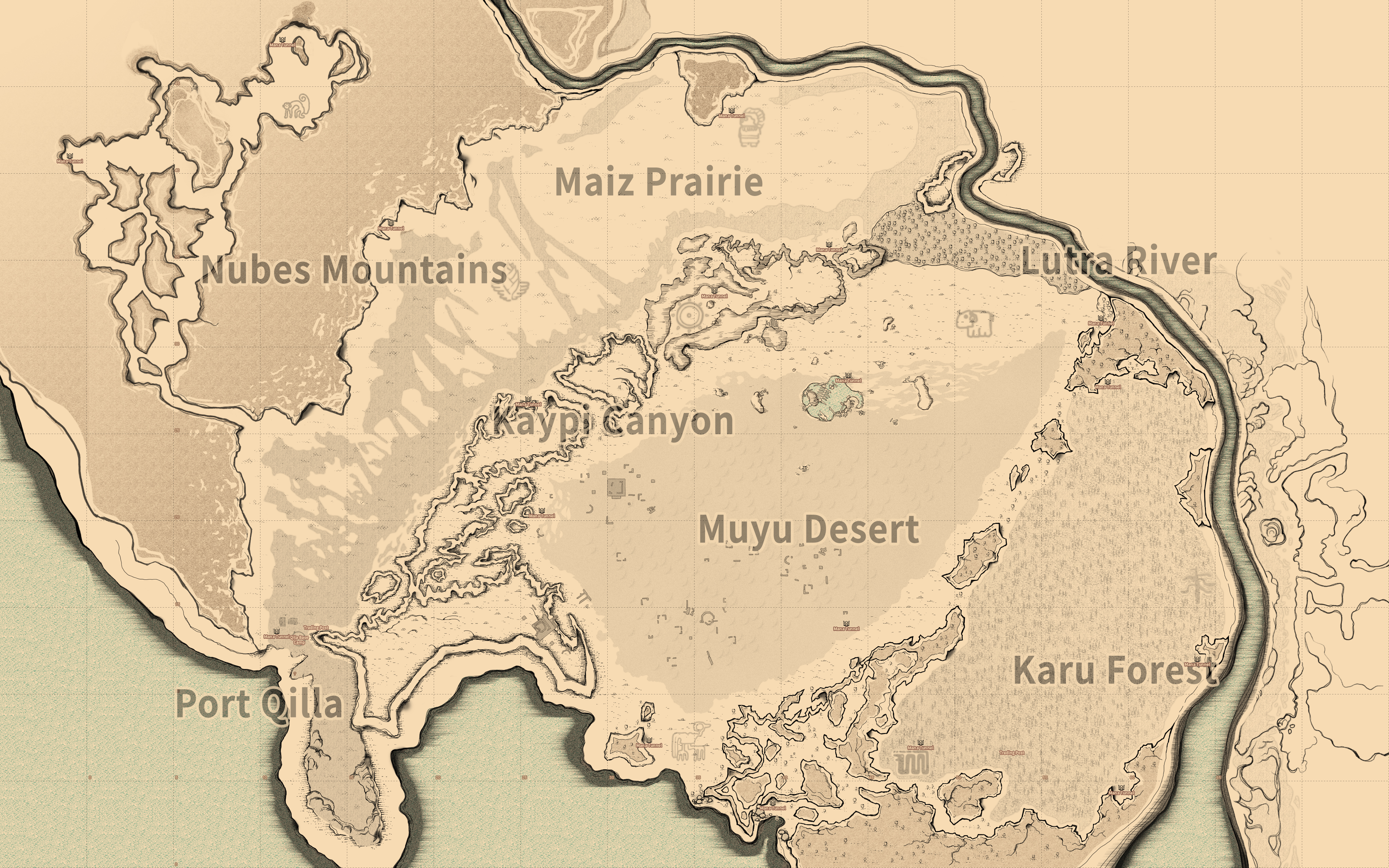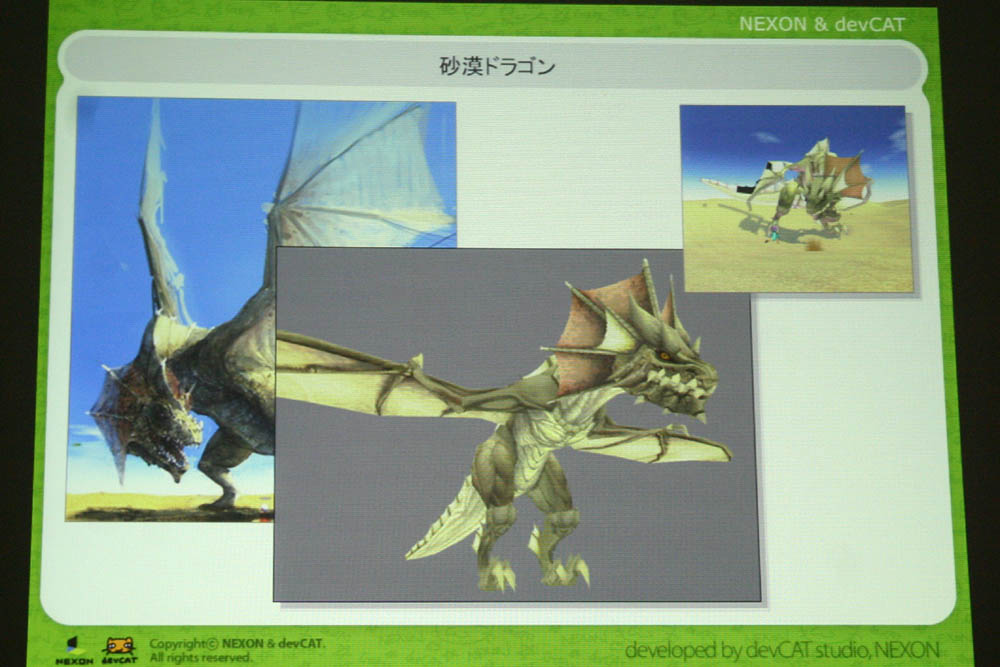Mabinogi World Wiki is brought to you by Coty C., 808idiotz, our other patrons, and contributors like you!!
Keep this wiki going by contributing to our Patreon!
Category:Rano
Description and Geography
Rano is the part of Iria that Uladh's humans have just recently discovered as of the events of Generation 4. They have established an outpost, known as Qilla Base Camp, at the southwestern tip of the region. Explorers and Adventurers alike have flocked to visit the exotic new land; various Artifacts and Exploration Treasures can be found scattered across the land.
Rano features harmless ![]() Wild Mustangs and Wild Ostriches that can be ridden for a scenic ride. Taking a trip on all routes will reward the player with the The Horse and Ostrich Rider Title.
Wild Mustangs and Wild Ostriches that can be ridden for a scenic ride. Taking a trip on all routes will reward the player with the The Horse and Ostrich Rider Title.
Stepping on all landmarks will reward the "The Explorer of Rano" title.
- You do not need to visit the Monkey Mark to receive the title.
The Desert Dragon, Prairie Dragon and Giant Sandworm Raids occur in this region.
In order to travel deeper into Iria, with the exception of Solea, the player must travel across a Bridge.
Landmarks
- The Human Mark, east of Maiz Prairie, a vast plain.
- The Flower Mark, in the center of Maiz Prairie.
- The Sheep Mark, northeast of Muyu Desert, a dry desert where the remnants of an old civilization may be found.
- The Bird Mark south of Muyu Desert.
- The Snake Mark south of Karu Forest, a forest of large, tall trees where mushrooms may be found at night.
- The Tree Mark east of Karu Forest.
- The Sun Mark in Kaypi Canyon, where the terrain varies greatly.
- The Monkey Mark in Nubes Mountains, a hilly region leading to Solea.
Travel
- A bridge must be found through L-rod exploration to link Rano and Courcle at the far eastern canyon border of Maiz Prairie.
- Special steps are required to connect Rano and Connous along the eastern river border of Karu Forest.
- The caves to Solea (and Physis) are north of the Monkey Mark in Nubes Mountains.
Areas of Interest
Resources
| Animal/Crop/Monster Source | ||
|---|---|---|
| Resource | Obtained From | Location |
| Sheep | Maiz Prairie | |
| Spiders | Any spider | |
| Hen | North Qilla | |
| Cow | North Qilla | |
| Mushroom Gathering | Karu Forest (Night time) | |
| Mushroom Gathering | Karu Forest (Night time) Week days only | |
| Mushroom Gathering | Karu Forest (Night time) Wednesdays only | |
| Trees/Fruit | ||
|---|---|---|
| Resource | Obtained From | Location |
| Berry Shrub | Any tree | |
| (Gathering Axe equipped) from Trees | Any tree | |
| Ores/Minerals | ||
|---|---|---|
| Resource | Obtained From | Location |
Various Gems |
Metallurgy | See Metallurgy Sites. |
Amenities
- None
Facilities
- None
NPCs
Monsters
Areas Connected
- Karu Dungeon
- Maiz Dungeon
- Uladh (Through Port Qilla)
- Connous (East)
- Solea (Northwest)
- Courcle (North)
- Nemeton (Storyline-only)
Exploration and Artifacts
The exact locations of the bridges found in Rano. The Connous bridges require special steps.
Trivia
- Concept artwork depicts Greco-Roman styled ruins in Rano that are not actually present.
- A good amount of the Exploration Quests of Rano reference real-world mythology.
- Despite being part of Rano, Nubes Mountains is separated from Rano map-wise.
- It is also one of the few regions in Iria where flight is impossible.
- Qilla (also qhilla) is a Quechuan word meaning lazy or idle.
- It could also be q'illa, the Quechuan word meaning scar or wound.
- Kaypi is the Quechuan word for this is/here/here is. It is made up of the word kay (this, being, existence, or to be) and the locative suffix -pi (meaning at the or at).
- Canyon comes from the Spanish word cañón meaning canyon/cannon/tube, itself formed from caño (tube) and the augmentative suffix -ón (typically used to denote largeness, emphasis, and large quantity).
- Together, Kaypi Canyon as a whole could be seen as meaning something like "this here is the canyon".
- The area around Kaypi Canyon's Sun Mark was reworked with the Generation 18 Iria renewal.
- Likewise, Muyu Desert's Ruins and dragon bones were added with it.
- Karu is a Quechuan word meaning far away.
- According to the Mystery of the Karu Forest, Karu's trees are known as Tikka.
- Using the Nearby Rumors Keyword on Weide reveals that Connous was once also covered in Tikka trees; this might explain why Elves frequently make use of the plant.
- Muyu is a Quechuan word meaning circle, round, ball, seed, or egg.
- According to an ancient book, a meteorite fell in Muyu Desert and the poisonous material started to change the once beautiful land into a desert.
Gallery
References
| ||
Pages in category "Rano"
The following 8 pages are in this category, out of 8 total.

















